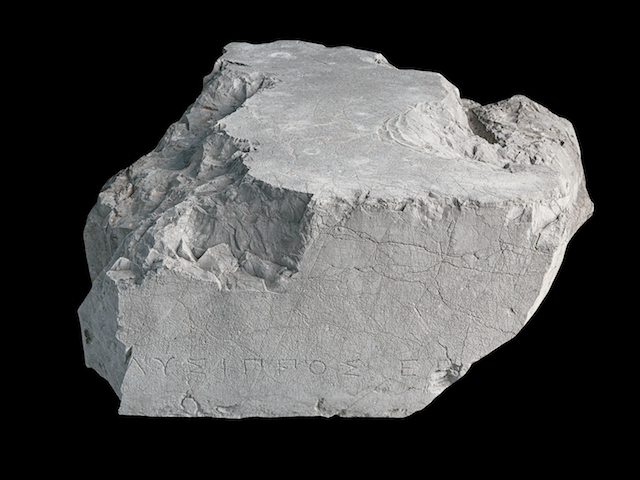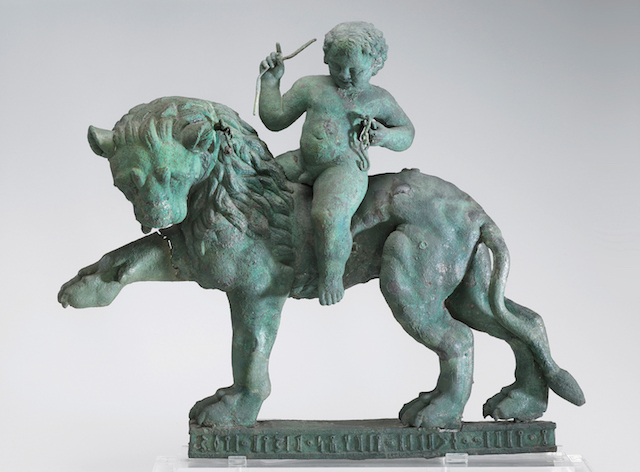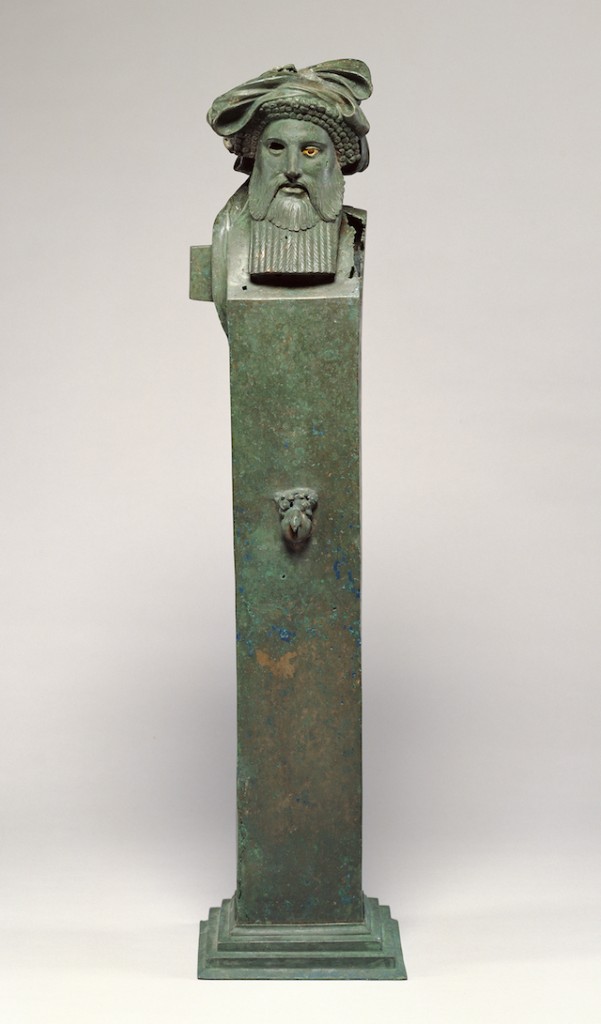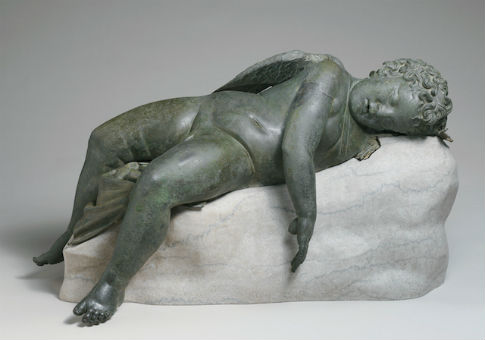The identity of Alexander the Great’s tutor—Aristotle—is well known to anyone with even a limited classical education, but the conqueror’s favorite sculptor and court portraitist is less of a household name. It was Lysippos, a significant figure in 4th-century B.C. sculpture even without his connection to Alexander. Pliny the Elder reports that the prolific artist—he is thought to have produced something like 1,500 bronze sculptures—was famous for a new approach to symmetry, softening the rigidity or "squareness" of the 5th century, and for his attention to details such as the realistic portrayal of hair.
Lysippos was a critical figure of what used to be known as "late classical" Greek sculpture, the transitional period between the classical era that preceded his career and the Hellenistic age that followed the death of his most important patron. Pliny also reports of the sculptor that, "it was a common saying of his, that other artists made men as they actually were, while he made them as they appeared to be"—an assessment that could just as easily be applied to the transition from the cold naturalism of the Italian Renaissance to the movement and subjectivity of mannerism and the Baroque. So what remains today of the work of such a critical figure in the history of Greek art—the Michelangelo to Phidias’ Leonardo?
Absolutely nothing, or so it seems thus far. Lysippos worked exclusively in bronze, and though bronze is quite durable, it was also quite valuable, and not too difficult to melt down. What exists today of his work are later copies in both marble and bronze, and poignant reminders. One such memento is the base for a statue that once stood in Corinth, and then perhaps—scholars speculate—initially carted off to Rome when that city fell to the Republican general Lucius Mummius in 146 B.C., and lost forever at some point thereafter. Inscribed on the base—which is one of the first objects one encounters at the National Gallery of Art’s splendid new exhibition of bronze sculptures of the Hellenistic era—are the words "Made by Lysippos."

Lysippos’ influence haunts a few rooms of this exhibition, which brings to Washington several dozen bronze statues of the period—a remarkable haul, considering that only a few hundred examples exist today worldwide, down from (the curators speculate) thousands or even tens of thousands that were cast in antiquity. Of those that remain, Earl Powell, the director of the National Gallery, remarked on Thursday to the press, "In order to be preserved, they first had to be lost." Some of the statues here have been recovered from shipwrecks, or dug up from the volcanic ash that buried Pompeii, or otherwise recovered from premature and ironically fortuitous burials.
Among the objects that appear to display the direct influence of Lysippos, there is a small 1st-century B.C. replica of an equestrian statue of Alexander as a wavy-haired, beardless youth, captured in a moment of swirling action—a style of depiction that defined Alexander’s image for posterity—and three late copies of an athlete posed scraping the dirt and oil from his forearm. As Pliny dished back in the 1st century A.D.:
As already mentioned, Lysippus was most prolific in his works, and made more statues than any other artist. Among these, is the Man using the Body-scraper, which Marcus Agrippa had erected in front of his Warm Baths, and which wonderfully pleased the Emperor Tiberius. This prince, although in the beginning of his reign he imposed some restraint upon himself, could not resist the temptation, and had this statue removed to his bed-chamber, having substituted another for it at the baths: the people, however, were so resolutely opposed to this, that at the theatre they clamorously demanded the Apoxyomenos to be replaced; and the prince, notwithstanding his attachment to it, was obliged to restore it.

Alas, modern scholarship cannot be sure that the Ephesian copies in this exhibit are related to the Lysippan body-scraper question—nor, for that matter, can it resolutely confirm the belief of an earlier generation of scholars that a somewhat whimsical stature of Heracles, past his prime, toying with a club in one hand and holding a cup of wine in the other, is also a late copy of the master.
But if it could, that might not be the most remarkable coincidence in the exhibition, a prize that surely goes to two nearly identical Hermae—statues of gods adorned with a phallus, meant to offer divine protection for one’s home, and made somewhat famous in classical literature by the role they play in a controversy that got Alcibiades expelled from Athens—produced by the same 2nd-century B.C. workshop at roughly the same time, or so a metallurgical analysis informs us. What is especially remarkable about this is that one statue was brought up from a Mediterranean shipwreck in 1907 (and clearly displays the water damage) while the other, which displays no significant exposure to the sea, mysteriously appeared on the art market in the 1970s. Considering how few bronze statues of the period survive, it seems fair to ask, what are the odds?

Among the charms of this exhibit’s tour of Hellenism are the objects that were self-consciously archaic or produced in their own day in response to antiquarian tastes—a preference for the primitive, as Gombrich would have put it. These include two Orientalizing statues of Apollo, one from Pompeii and one found off the coast of Piombino, but both revealed as later efforts due, among other tells, to the detailed realism of the feet. There is something superficially appealing about Hellenism to the contemporary eye, and not only because so many of these works effectively convey real emotion and sensitivity, but also because the period seems similar in some respects to our own world. This was a time that fostered, in the eastern Mediterranean and western Asia, an internationalism or globalization that seems amenable to us now: witness the statues of Eros dug up from Yemen, or the very Greek figure bearing an inscription in Etruscan.
But witness also the blurring of the lines between political figures and depictions of the divine—for example, a stature recovered from Pompeii that appears to show a Hellenistic ruler with wings attached to his feet, as though he were Hermes or Perseus—an approach to legitimacy that would have been untoward for most of 5th-century Greece. But the Greece of autonomous city-states and the dignity that came with self-rule had all but disappeared, overrun first by the Macedonians, swallowed in turn by the Romans. By the end of the period covered in this exhibition, that world was as distant as is Shakespeare's from our own. These objects served, even in their day, as material memories of something that was long dead.
